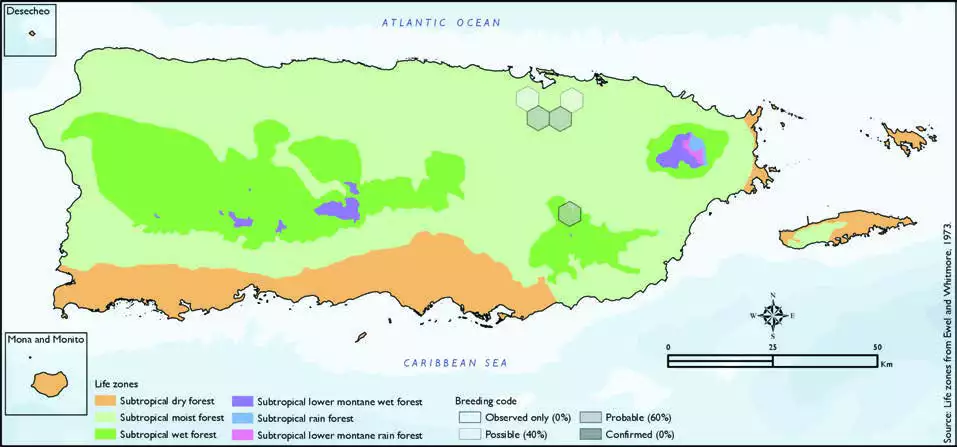Blue-and-yellow Macaw
Description
The blue-and-yellow macaw (Ara ararauna), also known as the blue-and-gold macaw, is a large South American parrot with mostly blue top parts and light orange underparts, with gradient hues of green on top of its head. It is a member of the large group of neotropical parrots known as macaws. It inhabits forest (especially varzea, but also in open sections of terra firme or unflooded forest), woodland and savannah of tropical South America. They are popular in aviculture because of their striking color, ability to talk, ready availability in the marketplace, and close bonding to human(s). They can also live for 65–70 years.
Distribution & Habitat
The Blue-and-yellow Macaw is native to eastern Panama,
Paraguay, southern Brazil, and
northern Argentina (Dickinson
2003). It is introduced and
established on Puerto Rico,
where there is one population
in the metropolitan area of San
Juan, which has experienced
declines and increases during
the last decades (Falcón and
Tremblay 2018). It is associated
with Roystonea palms for
food, roosting, and nesting
(J.A. Salguero-Faría, personal
observation 2009). In its native habitat, it occurs mostly in
seasonally fl ooded forests, gallery
forests along waterways, lightly
timbered savannas, and in some
regions also in deciduous forests
far from water (Forshaw 2006).
The atlas fieldwork yielded a
total of six records within five
hexagons or 1 percent of the 479
total hexagons (see map). Of the
five hexagons where this species
was found, breeding met the
atlas definition of probable in 60
percent (three) of the hexagons
and possible in 40 percent (two)
(see map). Blue-and-yellow Macaw distribution. The map shows the highest breeding code by hexagon and overlaying the ecological life zones
in Puerto Rico. Note: percentages may not total 100 due to rounding. 191Blue-and-yellow Macaw/Guacamayo Azuliamarillo

Breeding Habits
This species nests high in a hole of a dead palm, and
breeding occurs generally from
November to May in its native
range, according to previously
published reports (Juniper
and Parr 1998). Atlas results
suggest that this species breeds
during the months of April,
May, July, and October (see
chart). Overall, the breeding
activity peaks in May and July,
and mostly takes place within
the subtropical moist forest life zone (see chart). Results suggest
that this species breeds mostly
within the subtropical moist
forest life zone (80 percent of
the hexagons) (see table and
map). It may also breed within
subtropical wet forest life zones
at higher elevations (20 percent
of the hexagons).
Conservation
The current global population trend of the Blue-and-yellow
Macaw has not been quantified
or assessed, but the species is described as uncommon (Stotz
and others 1996). However, it
is currently listed as a species
of least concern by the IUCN
(BirdLife International 2018).
Locally, this species is not
listed in any of the threatened
categories of PRDNER and
USFWS. In Puerto Rico, the
Blue-and-yellow Macaw has
a protected habitat in land of
4 percent or 4.8 km2 of the total area covered by the hexagons
where evidence of breeding was
found for this species (119 km2).
Related Species
Family:
macaw